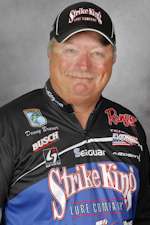In this lesson we'll take a look at how to apply the fishing knowledge you acquired in the previous lessons to your home water — where it really counts.
First, let's dispel some of the myths surrounding professional anglers. We fish the lakes and rivers that are assigned by B.A.S.S. We don't have any special insight into fishing them other than what our past experience on that lake or river taught us and our experience as longtime, serious bass anglers.
The spots we fish are determined by what we find when we get to the venue. There are no universal truths or magical places in this business. Just because I may have fished shallow grass points in the middle of April somewhere doesn't mean that's where you should be fishing — unless, of course, you happen to be fishing the same lake or river at the same time.
What that means in practical terms for recreational anglers is that you have to resist the temptation to fish what we fish or do exactly what we do. Every venue is different. Bass are not automatically "on" anything. They use what's available to them and what best serves their needs as predators.
This analysis is all about what's on your lake. It has nothing to do with mine. You're trying to catch fish on your home water. Where they live on mine is meaningless. Don't let that thought enter your mind.
Cover options are endless. Over the course of my career I've caught bass from refrigerators, old tires and stoves, as well as all the things mentioned above. If you've seen it in the water, I've caught a bass off it. The bottom line is that it was something the bass could lay next to or under and use as cover. Think security blanket and ambush point. That'll get you started in the right direction.
Then, consider other factors such as water temperature, the season of the year and what stage the bass are in. Once you have those things carefully in mind, try to merge that information with what cover is available in the part of the lake that's most likely holding bass. This should give you a pretty good idea of where and what to fish.
One general principle that may help you do all of this is that, as the fish are heading toward or away from their beds, horizontal cover becomes more of a factor. Try to avoid bluff walls, sharp drops and things like that. The bass are more interested in hiding under a canopy of some sort.
Another thought is that the water is still cool in most parts of our country. That means that sunny cover will be the warmest and the most productive. Don't worry so much about what's on the north bank. Instead think about things like shade. A bank on the east side of the lake with some afternoon and evening sun is likely to be a lot warmer than a northern bank that's covered by shade most of the day.
Think these things through. Apply them to your home waters. You'll be better off for it.





